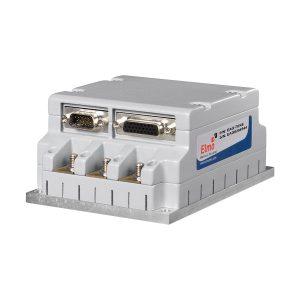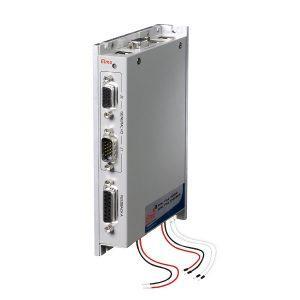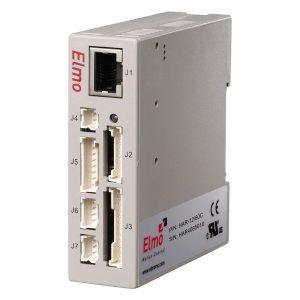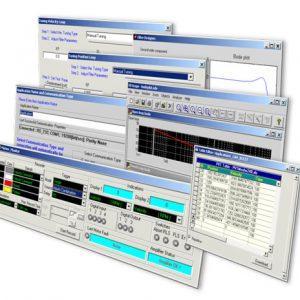Background
Unmanned vehicles have made quite an evolution throughout the years. Today, unmanned vehicles are tasked to maneuver through harsher terrains and environments and serve for a multitude of functions or operations. Unmanned vehicles are used for a variety of operations such as hauling, transportation, disposing and/or disarming of explosives, surveillance, etc.
This particular high-speed vehicle is a ground-based unit for both industrial and harsh environment use capable of reaching speeds of 25+ MPH (40+ KPH). This robotic vehicle platform is unique in the sense that it is omni-directional. Basically, all wheels steer independently which allows the vehicle to move in any direction. It is also equipped with a manipulator arm allowing for 5° of freedom. The manipulator arm is also capable to lifting 100+ lbs (45+ kg) at full extension.
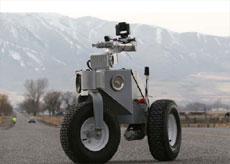
The Challenge:
- Provide a capable and compact drive package for a wide range of power levels.
- Provide a way to implement a distributed motion network.
- Upgrade from competitors’ lower power & capability solutions.The initial implementation fell short on power for the wheels and also did not provide genuine velocity control for the wheels. As a result, the vehicle had limited drive capability on an incline. And when coming to a stop, a final corrective move would occur… as an effect of the servos closing any position error present. Additionally, the vehicle’s control system was originally based on the CANopen DSP402 protocol, a device profile for motion drives. Direct compatibility of this protocol and knowledge of the implementation was required for a simple upgrade from one manufacturer to another.
Elmo’s Solution
The compact nature of this vehicle required comparably compact electronics and a minimal bulk from cabling. Drives designed with high power density and for distributed control system are an optimal fit.
The Eagle digital drive was selected for the vehicle’s drive system and provides encoder-only velocity control for the drive wheels. The Eagle model used for this application provides 60A continuous at a 46- 195VDC bus. Weighing at less than 25oz, the Eagle is a truly unique Elmo offering high power in a relatively compact package.
Connectivity
The Eagle and Falcon are industrial rated drives utilizing D-sub style connectors. The D-sub connectors are more ruggedized and can withstand the shock and vibration encountered while the vehicle travels through rough terrains.
Another key factor for utilizing the Elmo based solution was the support of the CANopen protocol. The CANopen implementation allowed the drives to be mounted very close to the electrical axis and reduce overall cabling. Supporting both CAN In and CAN Out terminals, allows daisy-chaining of the CANopen communication lines from drive to drive.
Motor connections
- Control Architecture & Feedback Interface
- Velocity control with only an encoder
- Hall only feedback for position control
- Analog, absolute position sensor interface
- CANopen DSP402
- Profile Velocity
- Profile Position
Why Elmo:
- High reliability EEC
- Harsh environment “ready to use”
- High power density
- Versatile servo architecture
- CANopen DSP402
- High efficiency
- High linearity and accuracy


